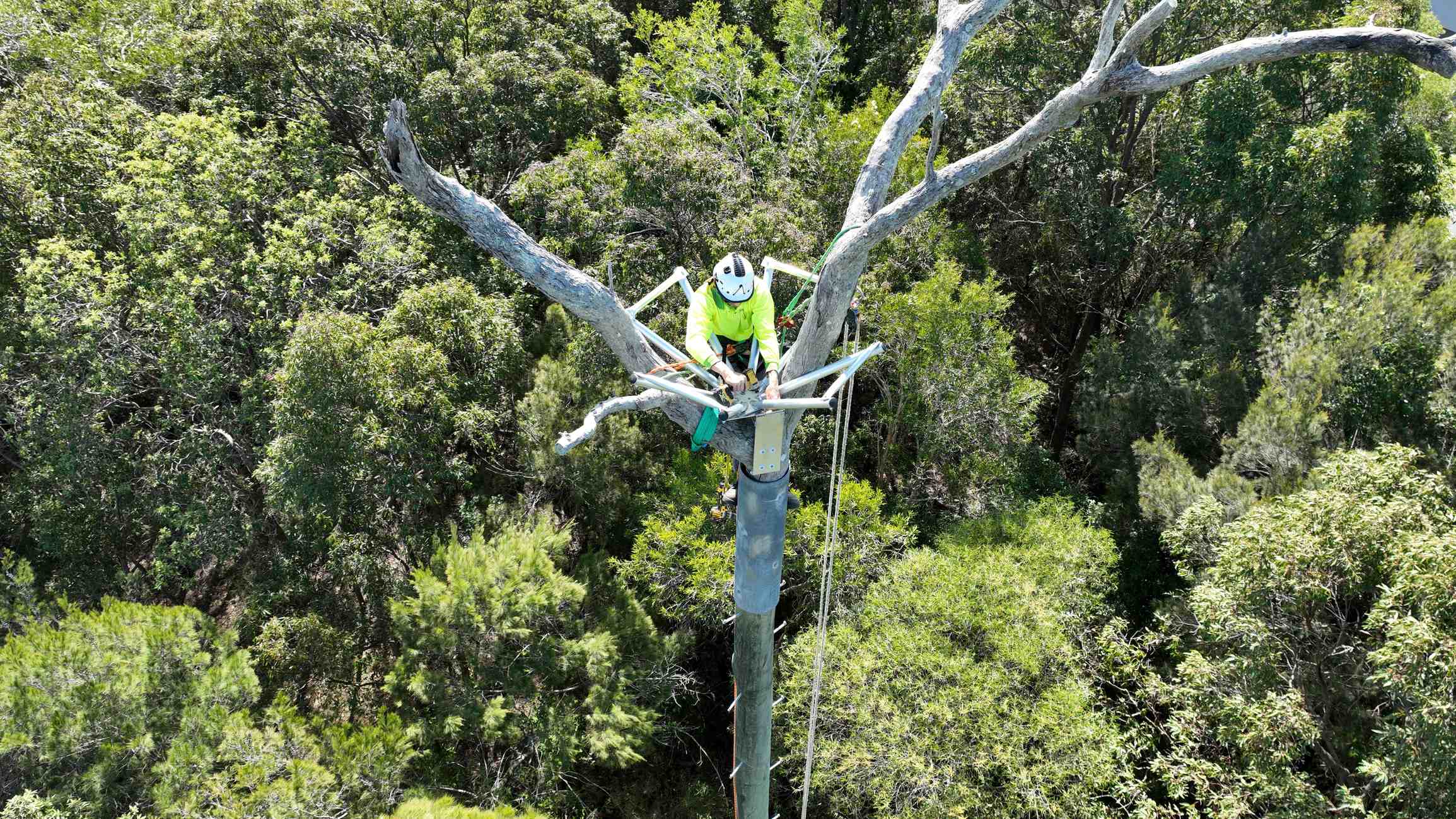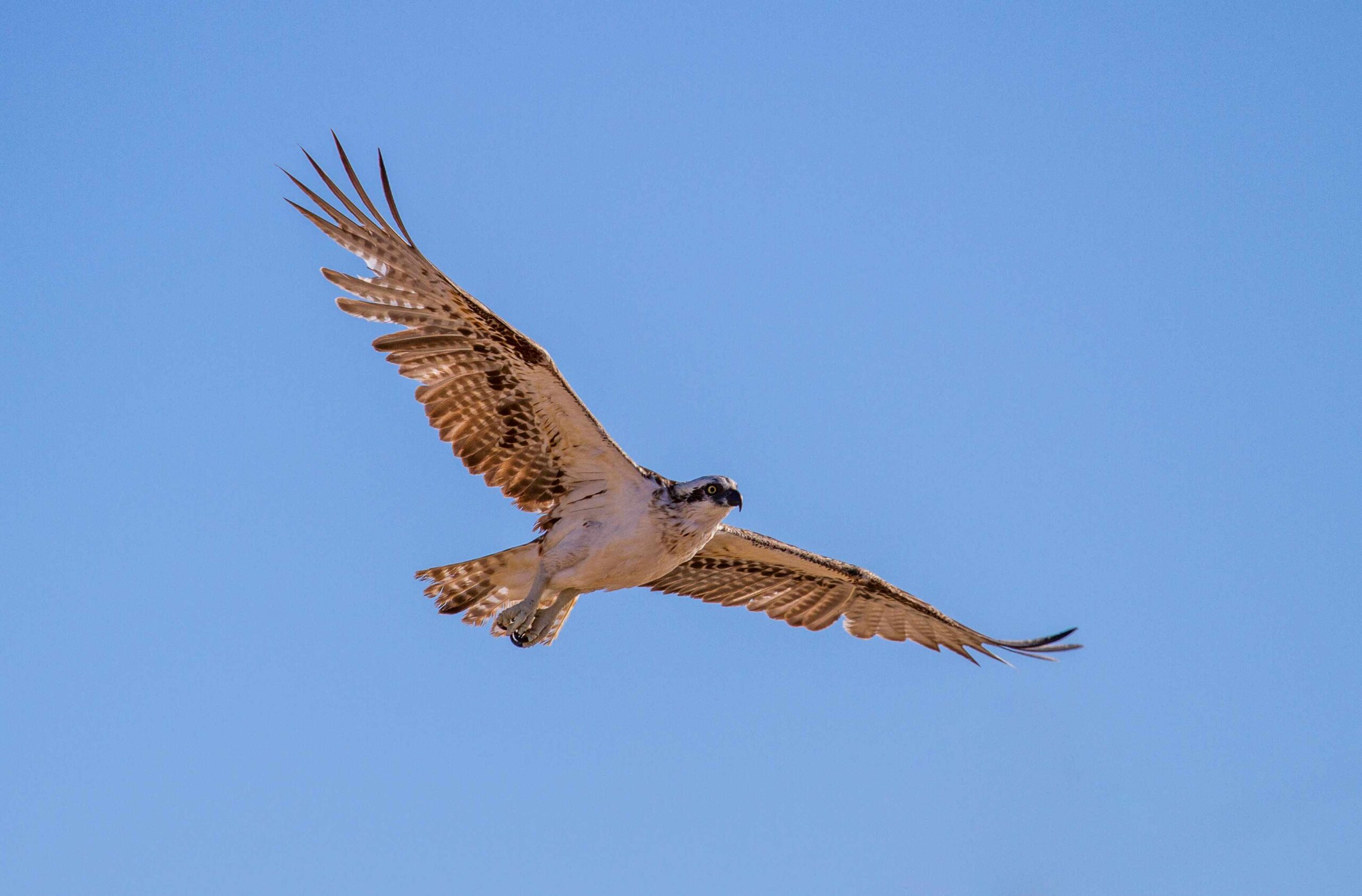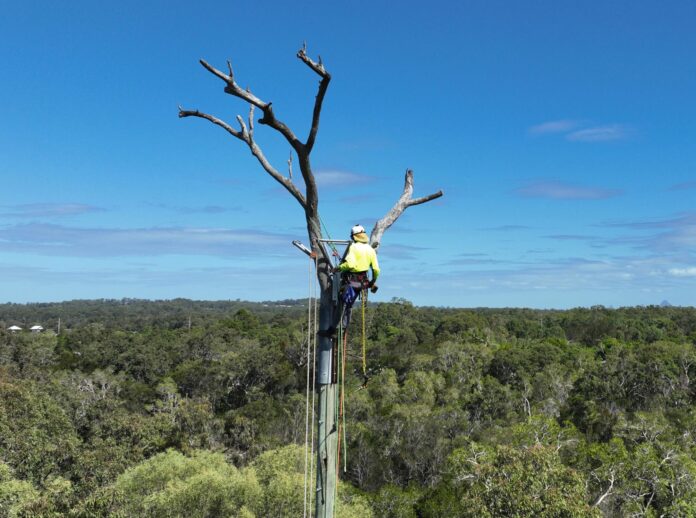This was a renovation rescue like no other – a new sky-home for a high-flying Sunshine Coast couple.
Sunshine Coast Council has just completed a lofty project to ensure a better future for a pair of ospreys – and their future offspring.
The pair’s old home atop a 30m pole at Anchorage Drive, Birtinya, had succumbed to effects of weather and time, with a large storm destroying the nesting platform.
Osprey experts advised the birds would return to the location, but after breeding seasons with no nest, council decided to intervene.
Wildlife infrastructure specialists designed a new nest structure based on the most current science and learnings from other locations.
It has now been installed and the pair immediately settled in, even bringing a fish for dinner.
Environment and Liveability Portfolio holder and Division 3 Councillor Peter Cox thanked local residents for alerting council to the damaged nest.
“Council acknowledges the role of the community in caring for nature,” he said via a council media release.
“Huge thanks to the residents around Anchorage Drive, who have diligently monitored the birds over many years and their efforts in reporting to council on their success or lack of success in creating the new nest – and advocating for a new nest structure.”

Cr Cox said the welfare of the ospreys was of great importance and a lot of time and expertise had gone into the new design.
“This is the second nest renovation for the pair, after their original nest was moved by the developer during the creation of the estate,” he said.
“While this new nest looks different to their old one, we can assure our community that this same type of structure has been used in other locations along the coastline with great success.
“One of the birds returned to the perch with a fish immediately after council had finished.
“We hope to see a nest being built by the ospreys towards June or July in time for breeding season.”
The older timber designs are prone to failure in extreme weather and are now typically avoided.
Access to the site provided some challenges to overcome, and industry advice and experience led to the final result.

The new custom-designed, long-lasting aluminium osprey basket nestled into a natural timber tree frame has been designed and built by wildlife specialists.
This custom design has meant council has been able to keep the natural hardwood timber tree branches the birds use to perch on.
This perch is important to the birds as it allows them to survey the area.
Potential nesting material will be added to the basket in the coming week for the birds to use if they choose to. The birds will build a nest at least 15cm deep inside the structure.
Ospreys live along Australian coastlines, except for Victoria and Tasmania, in terrestrial wetlands and on offshore islands.
The main threat to an osprey’s survival is loss or degradation of nesting sites. They readily use artificial nesting platforms.
The osprey’s breeding season occurs from April to November. Some pairs breed every year, others every two to three years. Many return to the same nesting site year after year.
Both the female and male osprey take part in nest building, with the male doing most of the carrying and the female doing most of the arranging. Osprey nests vary in size but they are generally quite large, built using sticks and lined with seaweed and grass.
Help keep independent and fair Sunshine Coast news coming by subscribing to our FREE daily news feed. All it requires is your name and email at the bottom of this article.





